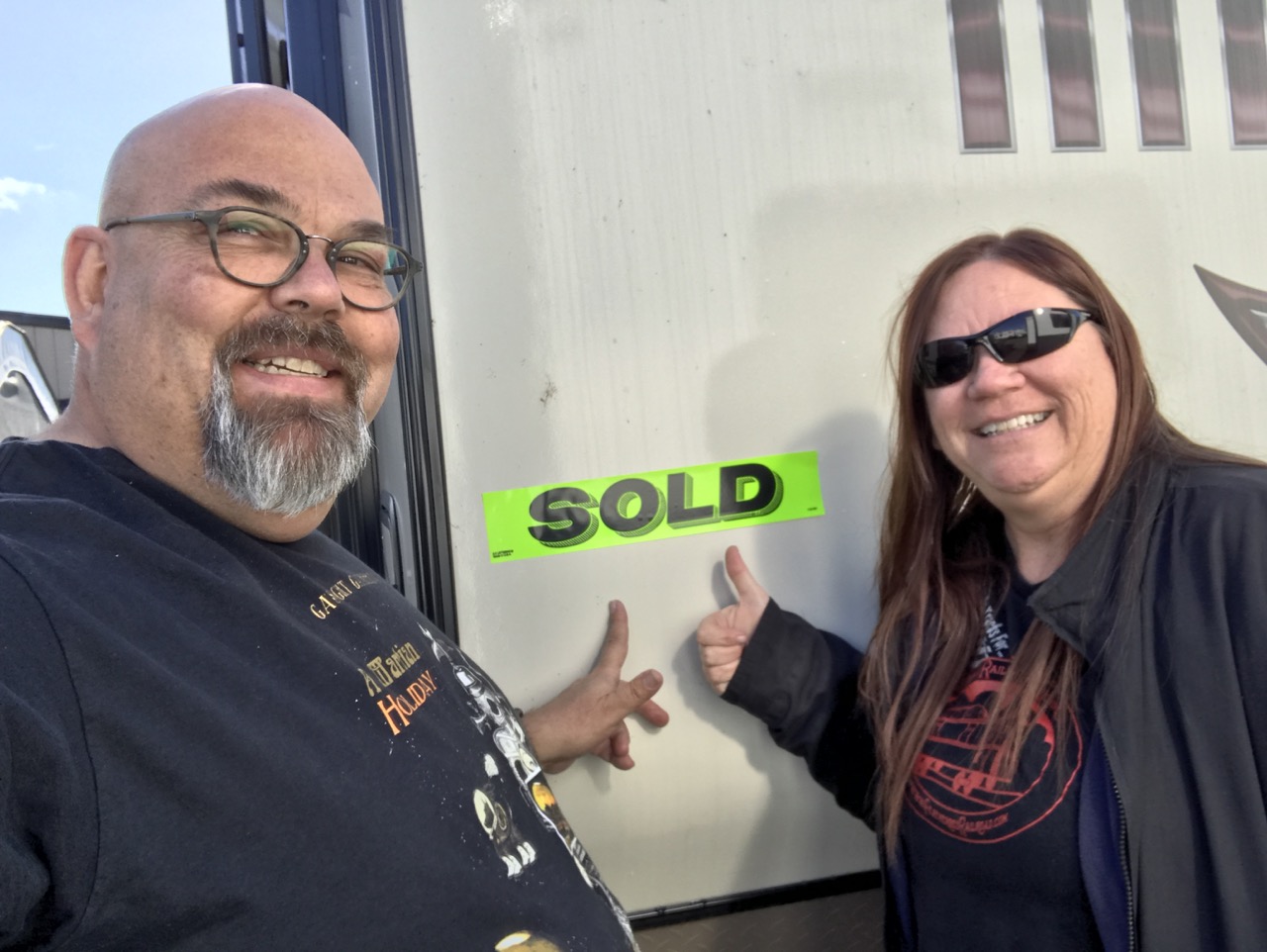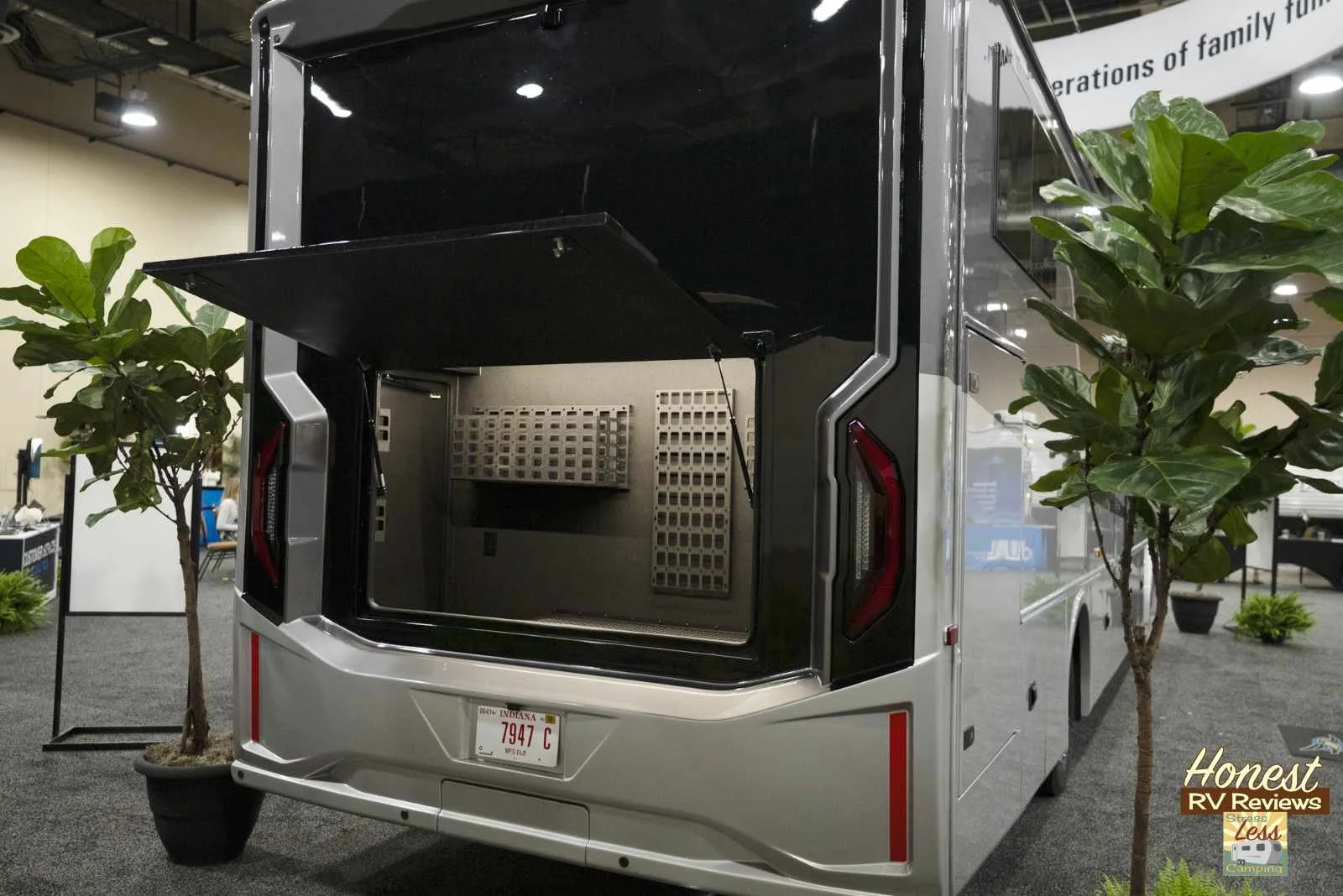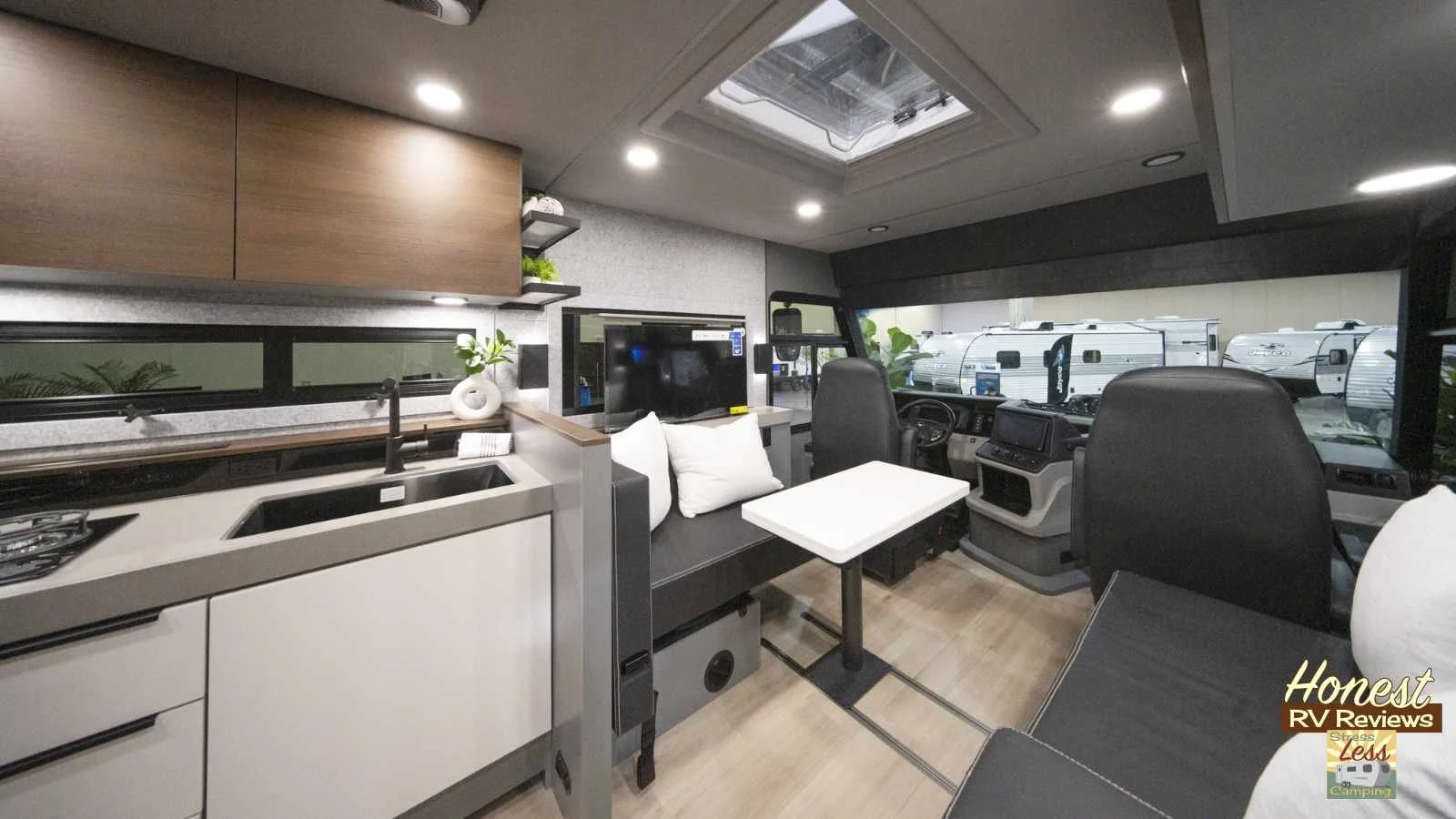Jayco Embark proves viability of an EV RV
Entegra announces groundbreaking EV motorhome
Last year we got to drive the prototype RV EV chassis that showed a collaborative effort between RV maker Thor and commercial chassis builder Harbinger. Now we are looking at the first production-intended version of that in the new Entegra Embark motorhome. Coming in at 30’ 9” long and just over 11’ tall the Embark is expected to have an MSRP around $460,000. 😳
But the model is very nicely detailed and also unusual. But first about the way this works.
“When THOR had asked us to partner with Harbinger to develop this, for us, it was an incredible opportunity to really lead the charge into what will probably be the next generation of RVing,” Jayco Director of Product Development Cory Weatherford told RVBusiness. “The chassis itself with this size of a motorhome on it is 22,000 pounds and, off of all electric, we can go approximately 110 miles. Harbinger did develop a gasoline range extender on this. So, the engine is powering a 45-kilowatt hour generator which is powering the batteries. Depending on driving conditions, you’re at approximately 475 to 500 miles.”
What is an EV RV?
A railroad locomotive is an electric vehicle using electric motors to drive the locomotive. It also has a gigantic diesel-powered generator to drive those electric motors.
In some ways this is the same thing. The actual traction motors on the Embark are electric but there is also a monstrous battery aboard to power that driveline.
Then there is a four cylinder gasoline generator aboard as well with a 50 gallon fuel tank. The combined range of the battery system and the gasoline engine is about 500 miles which is rather impressive.
That number comes from about 110 miles of range on battery alone and the rest being made up of the generator kicking in to recharge the battery as you roll down the road.
“When we talk about 500 miles, that’s 500 miles not stopping,” said Ryan Forgey, Jayco vice president of engineering. “If you stop to eat, it will keep charging. Any time you stop, it can potentially make it go farther.”
What’s inside the Jayco Embark EV?
Essentially this is a no-slide Class A motorhome with the typical cockpit in the front. Directly behind that is a dinette and, when you rotate the front seats four people can sit there and interact.
A kitchen is on the road side not dissimilar to the one in the Coachmen Euro. There’s a single burner induction cooktop as well as a propane burner. The cabinets have a really nice look to them and conceal the microwave and refrigerator as well as providing storage as you would expect.
The bathroom is split with the shower on the road side and the toilet and sink on the camp side. The shower has remarkable space inside it for even taller travelers and has walls that look like a nice tile. In fact the entire interior has a very upscale feel to it which is what you’d expect in a motorhome at this price point.
Surprising storage in the Entegra Embark
This RV follows a newer trend where the rear bed, a queen-sized affair, is raised so that there can be a very large storage compartment below it. This has become very common in European motorhomes but is finding its way here starting with rigs like the Winnebago EKKO. Apparently the lack of a diesel engine made it possible to open up this space for storage. Nice.
Where are the solar panels?
Entegra made a conscious decision not to include solar panels with this build saying that solar isn’t going to provide much range whatsoever so they chose to go with the generator alone. You can also utilize park power to recharge the battery and you can use EV charging stations to do so as well.
What I would do differently
I would have put solar panels on this rig, actually. If you’re off-grid camping you could use the solar to compensate for losses generated by using the RV so that you maintain full range. I realize solar isn’t going to do much for range but if you’re camping off the grid the solar could compensate for that.
Further, if the RV is being stored for extended periods of time, as these usually are, the solar could compensate for the refrigerator (here’s an article about how much power an RV refrigerator uses). I do recognize that, if there were solar panels, people would assume they would add to the range so maybe that was part of the decision making.
I would have also used anything but the lousy Coleman Mach air conditioning antiques on the roof of this rig. A mini split, the Furrion Chill Cube, anything. But these are the industry standard but are also just lousy antiques that are loud and have a reputation for failure. This was a decision that had to be made by an accountant, not an RVer.
Also, why is there propane aboard at all, FFS? Truma makes a furnace that runs on gasoline now and there is already an induction cooktop in this rig - just put two. Having the inconvenience of having to fill propane is, well, frustrating.
When I drove the prototype it was clearly designed by an RVer who had a passion for doing things differently in a good way. It seems that this production was designed by an Indiana decision maker who wants to be a fancy dude but also is looking as much at the numbers as anything else.
I do like this idea as it does make a lot of sense even though I know folks will have issues just because it’s an EV and that’s a shame.
Grand Design, a competing company, had the brilliance of hiring Mike Hums and letting him go nuts with their new Lineage motorized RVs. The result? The company went from no motorized rigs to being in the top three and I think that’s because Hums made so many groundbreaking decisions with their products that really set them apart.
Everything in the Lineage was looked at differently by someone passionate about the product including the climate control (first time I’ve seen a manufacturer put in a mini split) to a solar awning and on and on.
Jayco/Entegra and Thor had an opportunity to do the same thing here and, while I really like what they’ve done, there are so many missed opportunities in the details that it makes me sad. But, perhaps, with feedback they can do a bit better - the foundation is really solid but the devil’s in the details and that pitchfork the devil has might just be the inspiration to make a few changes. 👹
More RV reviews
We have more RV reviews that you can see including specific categories for your reference.
Our complete collection of travel trailer reviews
Our complete collection of fifth wheel RV reviews
Our complete collection overlanding RV reviews
Our complete collection of motorhomes and motorized RV reviews
Our complete collection of toy hauler RV reviews
Our complete collection of bunkhouse RV reviews
Our complete collection of Class B/Van Life reviews
RV Shopping Tips
If you’re shopping for an RV we have some great resources for you.
Our complete guide with Tips for buying and selling an RV
Planning on purchasing a towable RV? Visit our RV towing guide first.
Is the mattress in your RV terrible? Check out the GhostBed RV Mattress - we love ours.
Visit an RV show
Want to check out RVs for yourself in person? We have a complete list of RV shows across the US.















